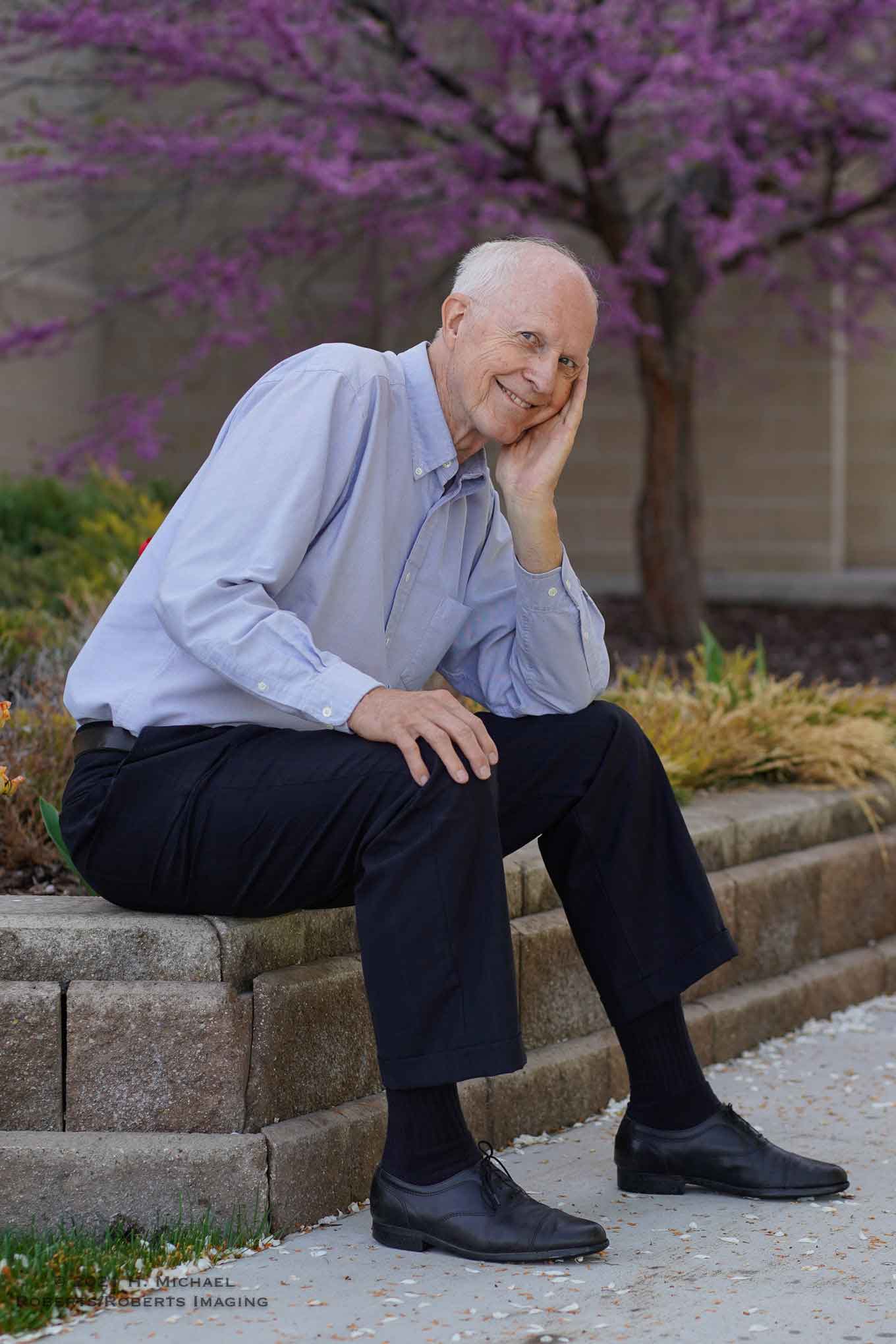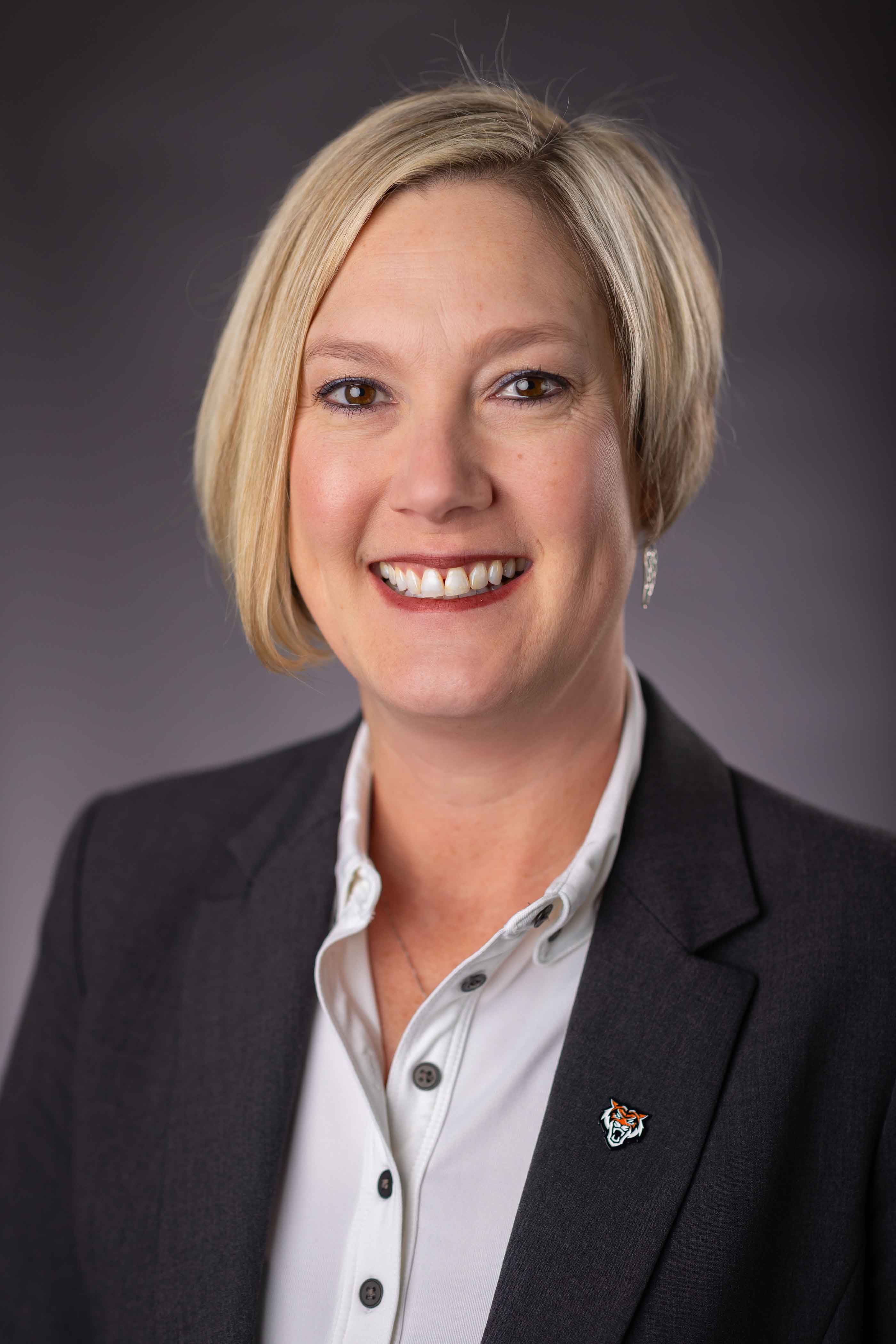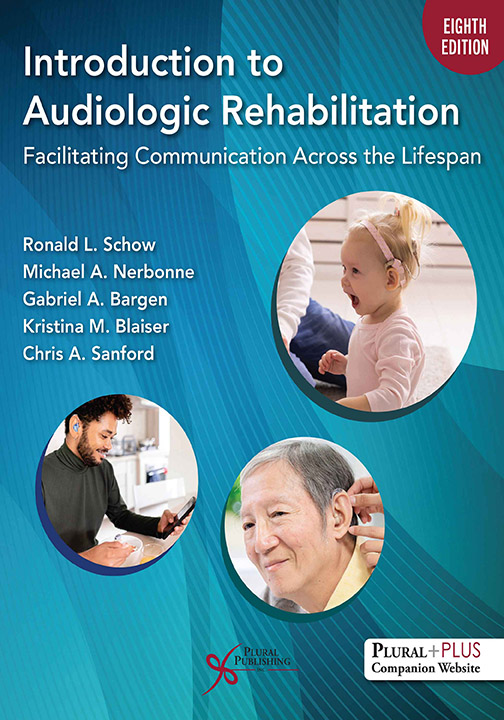
Introduction to Audiologic Rehabilitation: Facilitating Communication Across the Lifespan
Eighth Edition
Ronald L. Schow, Michael A. Nerbonne, Gabriel A. Bargen, Kristina M. Blaiser, Chris A. Sanford
Details: 542 pages, 2-Color, Softcover, 8.5" x 11"
ISBN13: 978-1-63550-755-3
© 2026 | Available
For Instructors
Purchase
The eighth edition of Introduction to Audiologic Rehabilitation offers a comprehensive exploration of aural rehabilitation spanning across the lifespan. Written in an accessible style for undergraduate students, the text covers the fundamentals, methods of assessment and management, technologies, and contemporary issues for a thorough understanding of audiologic rehabilitation practices. Two chapters focus solely on real-world case studies addressing the needs of children and adults. There are detailed chapters on hearing aids and hearing assistive technologies, cochlear implants, auditory and visual stimuli in communication, language and speech of the deaf and hard of hearing, psychosocial aspects of hearing loss, and more.
New to the Eighth Edition
- Discussion of current issues and trending topics including over-the-counter hearing aids
- Highlights related to telepractice and teleaudiology
- Addition of diversity, equity, and inclusion topics related to hearing health disparities and audiologic rehabilitations
- Updated PluralPlus companion website with instructor and student resources
Key Features
- Based on a proven model framed within the concepts of the World Health Organization
- Authored by leading experts ensuring current, evidence-based information
- Emphasis on a multidisciplinary approach, recognizing the collaborative nature of audiologic rehabilitation involving professionals in audiology, speech-language pathology, and related fields
- Case studies offer application opportunities across the lifespan
- Each chapter includes activities, recommended readings, and websites for additional resources
- Visual aids, including figures, tables, and photos enhance student comprehension, particularly for complex topics such as cochlear implants and auditory stimulation
- Appendices containing valuable terms, definitions, and additional resources for easy reference
PluralPlus Online Ancillaries
For instructors: PowerPoint Slides, Test Bank
For students: Activities/Exercises, Videos, Audios, Forms/Documents, Links to Related Resources
Reviews
"The textbook’s approach to its target audience is highly demonstrable. Students, in particular, benefit from access to the companion website, which offers supplementary activities to reinforce understanding and encourage practical application."
—Nisha Dhanda, BSc, University of Birmingham, in ENT & Audiology News (July 2025)
Preface
Acknowledgments
About the Editors
Contributors
Chapter 1. Overview of Audiologic Rehabilitation
Jeff E. Brockett, Ronald L. Schow, and Chris A. Sanford
Learning Outcomes
Introduction
Definitions and Synonyms
Historical Background of Audiologic Rehabilitation
Infants
Children
Adults
Providers of Audiologic Rehabilitation
Education Requirements for AR Providers
Settings for Audiologic Rehabilitation
Hearing Loss Characteristics
Degree of Hearing Loss and Configuration
Type of Loss
Auditory Speech-Recognition Ability
Time of Onset
Prevalence of Hearing Loss
Consequences of Hearing Loss: Primary and Secondary
An AR Model: CORE and CARE
Rehabilitation Assessment Procedures: CORE
Management Procedures: CARE
Outcome Measures
Practicality of Using Models in AR: Proactive Versus Reactive Approaches
Contemporary Issues
Professional Issues
Evidence-Based Practice
Multicultural Issues
Equity in Hearing Health Care
The Current Status of AR
Summary
Summary Points
Supplementary Learning Activities
Recommended Readings
Recommended Websites
References
Chapter 2. Hearing Aids and Hearing Assistive Technologies
Elizabeth Preston and Jessica Stich-Hennen
Learning Outcomes
Introduction
History of Amplification
Hearing Aid Components
Microphone
Amplifier (Digital Processor)
Receiver
Batteries
Hearing Aid Styles
Behind-the-Ear
Receiver-in-the-Canal
In-the-Ear/In-the-Canal/Completely-in-the-Canal
Extended-Wear Hearing Aids
The Earmold
Who Is a Hearing Aid Candidate?
Degree of Hearing Loss
Degree of Communication Disability
Motivation to Use Amplification
Hearing Aid Fitting Protocol
Selection
Quality Control
Fitting
Hearing Aid Orientation
Verification/Validation/Outcome Measures
Pediatric Fittings
Special Fittings
Contralateral Routing of the Signal (CROS) Fittings
Bone-Conduction Hearing Devices
Cochlear and Brain Stem Implants
Hearing Assistive Technology, or When a Hearing Aid May Not Be Enough
Types of Assistive Devices
The Role of the Audiologist in Assistive Listening/Hearing Assistive Technology Systems
Verifying and Validating the Fitting of HATS
The Bottom Line: Cost Management and Payment for Hearing Aids and HATS
Summary
Summary Points
Supplementary Learning Activities
Recommended Readings
Recommended Websites
References
Chapter 3. Cochlear Implants
Brittan A. Barker and Camille C. Dunn
Learning Outcomes
Introduction
How Does a Cochlear Implant Work?
History of Cochlear Implants
Current Cochlear Implant Systems
The Cochlear Implant Team
Who Is a Cochlear Implant Candidate?
Types of Cochlear Implant Users
Cultural Responsiveness and Cochlear Implantation
Cochlear Implantation and Postoperative Care
Auditory Training and Intervention Following Cochlear Implantation
Variables Affecting Performance With Cochlear Implants
Summary
Summary Points
Supplementary Learning Activities
Recommended Readings
Recommended Websites
References
Chapter 4. Auditory Stimulation in Communication
Blair Richlin and Kristina M. Blaiser
Learning Outcomes
Introduction
A Communication Model
Auditory Perception
Development of Auditory Skills
Basic Perception Abilities
Acoustics of Speech
Speech Perception and Comprehension
Speech Perception and Hearing Loss
The Auditory Training Process
Definition and Application of Auditory Training
Early Efforts in Auditory Training
Carhart
Current Approaches to Auditory Training
Candidacy for Auditory Training
Assessment of Auditory Skills
Methods of Auditory Training
Erber
DASL II
SKI-HI
SPICE
Cochlear Implant Manufacturers
Consonant Recognition Training
Communication Training and Therapy
Summary Points
Supplementary Learning Activities
Recommended Readings
Recommended Websites
References
Chapter 5. Visual Stimuli in Communication
Gabriel A. Bargen and Kristina M. Blaiser
Learning Outcomes
Introduction
Factors Related to Speechreading
Speaker
Signal and Code
Visemes
Visual Intelligibility of Connected Discourse
Environment
Speechreader
Speechreading and Hearing Loss
Assessment of Speechreading Ability
Hearing Loss and Dependence on Vision
Traditional Speechreading Methods
Analytic and Synthetic Approaches
Recent Trends in Speechreading Instruction
Manual Communication
Summary Points
Supplementary Learning Activities
Recommended Readings
References
Appendix 5–A
Appendix 5–B
Appendix 5–C
Appendix 5–D
Chapter 6. Language and Speech of Individuals Who Are Deaf and Hard of Hearing
Kristina M. Blaiser and Gabriel A. Bargen
Learning Outcomes
Introduction
Communication Options for Families of Children Who Are Deaf/Hard of Hearing
Systems Emphasizing Listening and Spoken Language
Manual–Visual Systems
Systems Combining Visual and Auditory Information
Hearing as the Foundation for Speech and Language
Factors Affecting Speech and Language Acquisition
Language Characteristics of Children With Hearing Loss
Impact of Hearing Loss on Language Components
Language Assessment
Formal Language Measures
Language Sample and Narrative Analysis
Speech Development in Children With Hearing Loss
Speech Characteristics
Speech Assessment
Summary
Summary Points
Supplementary Learning Activities
Recommended Readings
Recommended Websites
References
Chapter 7. Psychosocial Aspects of Being Deaf or Hard of Hearing and Counseling Basics for Audiologists and Speech-Language Pathologists
Amy Szarkowski
Learning Outcomes
Introduction
Psychosocial Aspects of Being Deaf or Hard of Hearing
Timing of Onset
Deaf Cultures and Deaf Identities
Considerations for Supporting Individuals Who Are Deaf or Hard of Hearing
Children Who Are Deaf or Hard of Hearing
Families Raising Children Who Are Deaf or Hard of Hearing
Acquiring Hearing Loss as Adults
Deafness With a Capital “D”
“Knowing Is Not Enough”: Counseling Basics
Important Distinctions
What We May Think Counseling Is
What Counselors Say Counseling Is
The Counseling Process
When to Refer
Does Counseling Make a Difference?
Summary
Summary Points
Supplementary Learning Activities
Recommended Readings
Recommended Websites
References
Chapter 8. Audiologic Rehabilitation Services in the School Setting
Anita Vereb
Learning Outcomes
Introduction
Why AR Services Are Required in School Settings: The Educational Consequences of Hearing Differences/Losses
Hearing Differences/Losses and Learning
Mandated by Law
Key Components of the Individuals With Disabilities Education Act (IDEA)
Least Restrictive Environment (LRE)
The Individualized Education Program (IEP)
Types of Communication Modalities
Listening and Spoken Language
Total Communication
Cued Speech
American Sign Language (ASL)
Summary
AR Services Provided in Schools
Screening and Assessment
Early Identification of Hearing Loss
Screening in Kindergarten Through Grade 12
Management of Amplification/Audition
Direct Instruction and Indirect Consultation
Evaluation and Modification of Classroom Acoustics
Personal FM/DM Systems or Remote Microphone Hearing Assistive Technology (RM-HAT)
Transition Planning to Postsecondary Placements
How Services Are Provided
AR Service Providers in School Settings
Teachers
Audiologists
Speech-Language Pathologists
Related Support Personnel
Services for Children With Auditory Processing Disorders (APD)
Diagnosis/Assessment of APD
Remediation of APD
“A Day in the Life” of an Educational Audiologist
Introduction: Educational Audiologists Address a Variety of Rehabilitation Concerns in the School Setting
Summary Points
Supplementary Learning Activities
Recommended Readings
Recommended Resources
APD Software/Games
Recommended Websites
References
Appendix 8–A
Chapter 9. Audiologic Rehabilitation for Children: Assessment and Management
Kristina M. Blaiser and Gabriel A. Bargen
Learning Outcomes
Introduction
Prevalence of Loss and Level of Service
Contemporary Efforts to Strengthen the Evidence Base in Audiologic Rehabilitation
Terms and Definitions
Profile of the Client
Hearing Loss
Language Stage
Other Disabling Conditions
Rehabilitation Settings and Providers
Identification and Assessment Procedures With Children
Early Identification
School Screening
Medical and Audiologic Assessment
Aspects of AR: Early Intervention for Parent–Infant and Preschool
Rehabilitation Assessment: Individualized Family Service Plan (IFSP)
Management
Environmental Coordination and Participation: Working With Families of Infants
Shifting Roles and Strategies in the AR Program
Audibility, Amplification, and Assistive Device Issues
Hearing Aid Fitting
Type and Arrangement of Aid
Hearing Instrument Orientation
Monitoring Cochlear Implants
Auditory Learning and Development With Hearing Aids and Cochlear Implants
Naturalistic Approaches at the Parent–Infant and Preschool Levels
Communication and Language Stimulation: Parent–Infant
Counseling and Psychosocial Aspects
Needs of Parents
Consultation Between Counselor and AR Professional
Aspects of AR: School Years
Rehabilitation Assessment: Individualized Education Program (IEP)
Management
Environmental Coordination and Participation
Child Learning Environment (Classroom Management)
Audibility, Amplification, and Hearing Assistive Technology Issues
Hearing Aids
Cochlear Implant Support and Orientation
Remediate Communication and Language Stimulation: School-Age Level
Counseling and Psychosocial Aspects
Counseling
Children With Auditory Processing Problems
Summary
Summary Points
Supplementary Learning Activities
Recommended Readings
Recommended Websites
References
Chapter 10. Audiologic Rehabilitation Across the Adult Lifespan: Assessment and Management
Michelle L. Arnold, M. Kathleen Pichora-Fuller, and Ronald L. Schow
Learning Outcomes
Introduction
Profile of the Adult Client
Hearing Loss Across the Life Course
Sociodemographic Differences
Help Seeking and Screening
Profile of the Older Adult Client
Aging and the Auditory System: Age-Related Hearing Loss
Hearing Loss and Other Age-Related Health Conditions
Personal and Environmental Factors
Model for Rehabilitation
CORE Assessment
CARE Management
Importance of the Conceptual Framework to AR Practice
Rehabilitation Settings
Research and Teaching Settings: Universities
Military and Veterans Administration Medical Centers
Community Centers, Agencies, and Consumer Groups
Hospitals, Medical Offices, Private Practice Audiologists, and Hearing Instrument Specialists
Rehabilitation Assessment
Assessing Hearing Loss and Consideration of Comorbid Health Conditions
Assessing Activity and Participation and Considerations of Social Factors
CORE Assessment Summary
Rehabilitation Management
Counseling and Psychosocial Considerations With a Health-Promoting Approach
Communication Goals and Style
Age-Related Changes in Health That Interact With Hearing in Older Adults
Stress and Coping
Amplification and Other Technological Interventions to Manage Hearing Loss
Hearing Aids
Implantable Devices
Binaural Amplifications
Hearing Assistive Technologies (HATs)
Hearing Device Orientation for Older Adult Clients
Orientation to Instruments
The Significant Other
Advocacy in Restrictive Environments or Residential Care
Remediation for Communication Activities
Conversational Therapy and Tactics
Partner Communication
Simulations and Role Playing
Empathy and Listening
Environmental Interventions to Improve Participation
Participation in Situations and Relationships
Social Environmental Supports
Physical Environmental Supports
Other Important Issues in the Scope of AR Practice
Vestibular Assessment and Management
Assessment
Vestibular Rehabilitation Therapy
Tinnitus Assessment and Management
Assessment
Management
Conclusion
Summary
Summary Points
Supplementary Learning Activities
Recommended Readings
Recommended Websites
World Health Organization (WHO) Resources
Consumer Associations and Resources for the Public
Websites About AR Tools
References
Appendix 10–A
Appendix 10–B
Appendix 10–C
Appendix 10–D
Appendix 10–E
Appendix 10–F
Appendix 10–G
Chapter 11. Case Studies: Children
Kristina M. Blaiser and Chris A. Sanford
Learning Outcomes
Introduction
Case 1: Matthew—Early Intervention, Multiple Disabilities
Background Information
Intervention Plan
Environmental Coordination and Participation
Assessment: Postimplantation
Psychosocial and Counseling Aspects
Assessment and Intervention Post Diagnosis of Autism Spectrum Disorder
Communication Rehabilitation Adjustment
Summary
Case 2: Annie—Routes to Spoken Language Following Cochlear Implantation
Background Information
Aural Rehabilitation Plan: Preimplantation
Aural Rehabilitation Plan: Postimplantation
Intervention Outcomes
Summary
Case 3: Amber—Issues Affecting Educational Placement
Background Information
Assessment Findings
Recommendations for Management
Follow-Up Assessment
Case 4: Greg—Late Identification of a Child Who Is Hard of Hearing
Background Information
Communication Assessment
Management
Intervention Outcomes
Summary
Case 5: Sam—Differential Diagnosis Through Professional Teamwork: A Tool for Solving Complex Intervention Problems
Assessment
Management
Putting It All Together: Adapting the Educational Environment
Chapter Summary
Summary Points
Supplementary Learning Activities
Recommended Website
References
Chapter 12. Case Studies: Adults
Michael A. Nerbonne, Jeff E. Brockett, Corrie E. Holmes, and Chris A. Sanford
Learning Outcomes
Introduction
Case 1: Dr. M.—Progressive Hearing Loss
Case History
AR Assessment
Management
Communication Training
Summary
Case 2: Mr. B.—Hearing Loss, Depression, and Successful Hearing Aid Use
Informational Counseling
Rehabilitation Assessment
Overall Participation Variables
Related Personal Factors
Environmental Factors
Rehabilitation Management
Audibility Management
Summary
Case 3: J. D.—AR Featuring a Significant Other
Introduction
Informational Counseling
Rehabilitation Assessment
Rehabilitation Management
Summary
Case 4: Mrs. S.—Cochlear Implant User
First Evaluation
Rehabilitation Assessment
Second Rehabilitation Assessment
Post–Cochlear Implant Rehabilitation Management
Two-Year Post–Cochlear Implant Assessment
Post–Bilateral Cochlear Implant
Summary
Case 5: Mrs. E.-Nursing Home Hearing Aid User
Case History
Diagnostic Information
AR
Summary
Case 6: Ashley—New Technology for an Experienced Hearing Aid User
Introduction
Informational Counseling
Rehabilitation Assessment
Rehabilitation Management
Summary
Case 7: Ms. C.—Dizziness Issues
Introduction
Rehabilitation Assessment
Informational Counseling
Rehabilitation Management
Summary
Chapter Summary Points
Supplementary Learning Activities
Recommended Readings
Recommended Website
Acknowledgments
References
Index
Introduction to Audiologic Rehabilitation: Facilitating Communication Across the Lifespan, Eighth Edition comes with access to supplementary student and instructor resources on a PluralPlus companion website.
The companion website is located at: https://www.pluralpublishing.com/publication/itar8e
STUDENTS:
The student resources include Activities/Exercises, Videos, Audio, Printable Forms/Documents, and Links to Related Sources.
To access the student resources, you must register on the companion website and log in using the access code located in the front of your textbook.
INSTRUCTORS:
The instructor resources include PowerPoint Slides and Test Bank. You will also have access to all of the student resources listed above.
To access the instructor resources, you must contact Plural Publishing, Inc. to be verified as an instructor and receive your access code.
Email: instructormaterials@pluralpublishing.com
Tel: 866-758-7251 (toll free) or 858-492-1555
*Note for students: If you have purchased this textbook used or have rented it, your access code will not work if it was already redeemed by the original buyer of the book. Plural Publishing does not offer replacement access codes for used or rented textbooks.
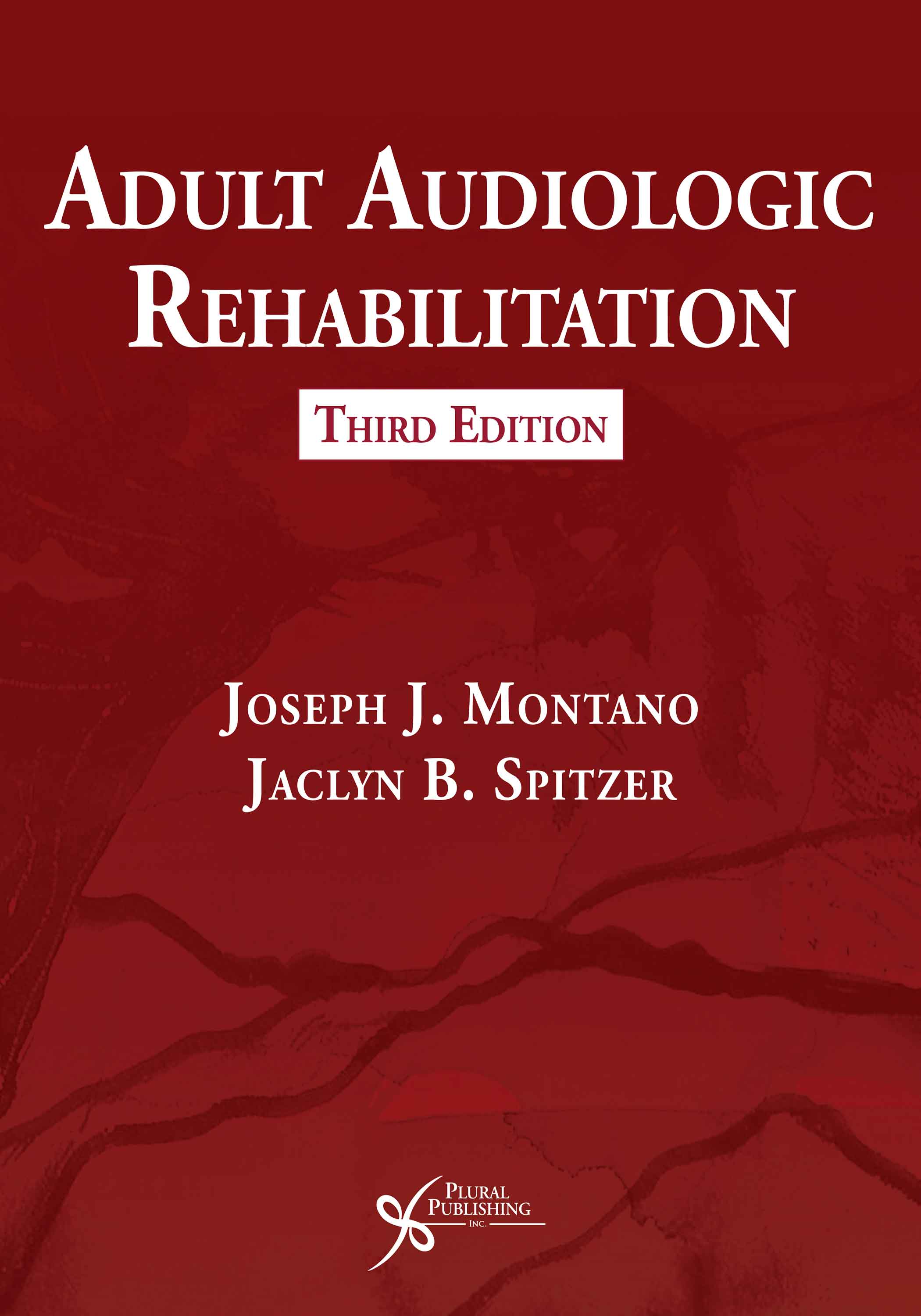
Adult Audiologic Rehabilitation
Third Edition
Joseph J. Montano, Jaclyn B. Spitzer
Details: 610 pages, B&W, Softcover, 8.5"x11"
ISBN13: 978-1-63550-143-8
© 2021 | Available
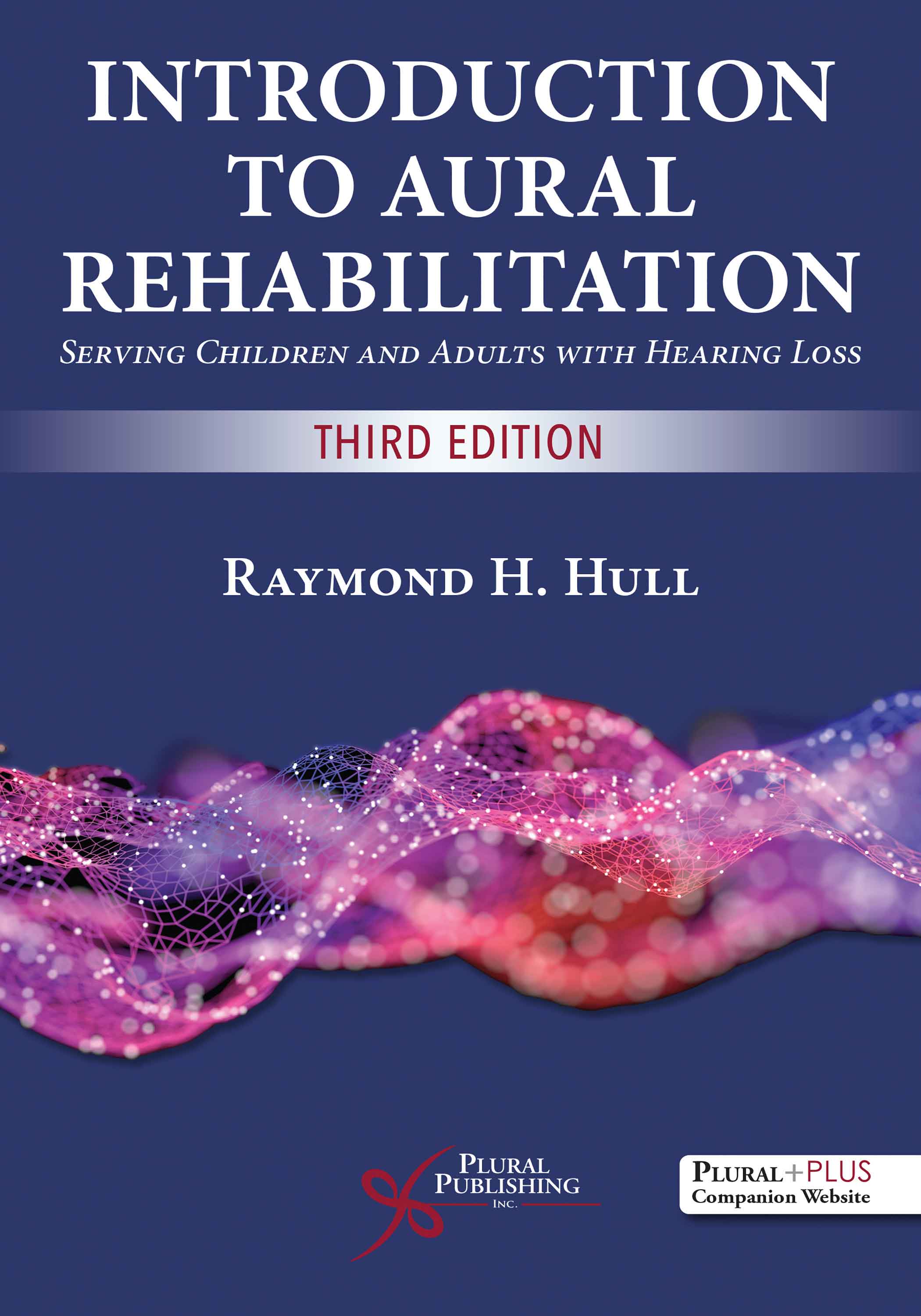
Introduction to Aural Rehabilitation: Serving Children and Adults with Hearing Loss
Third Edition
Raymond H. Hull
Details: 513 pages, 2-Color, Softcover, 7" x 10"
ISBN13: 978-1-63550-114-8
© 2021 | Available
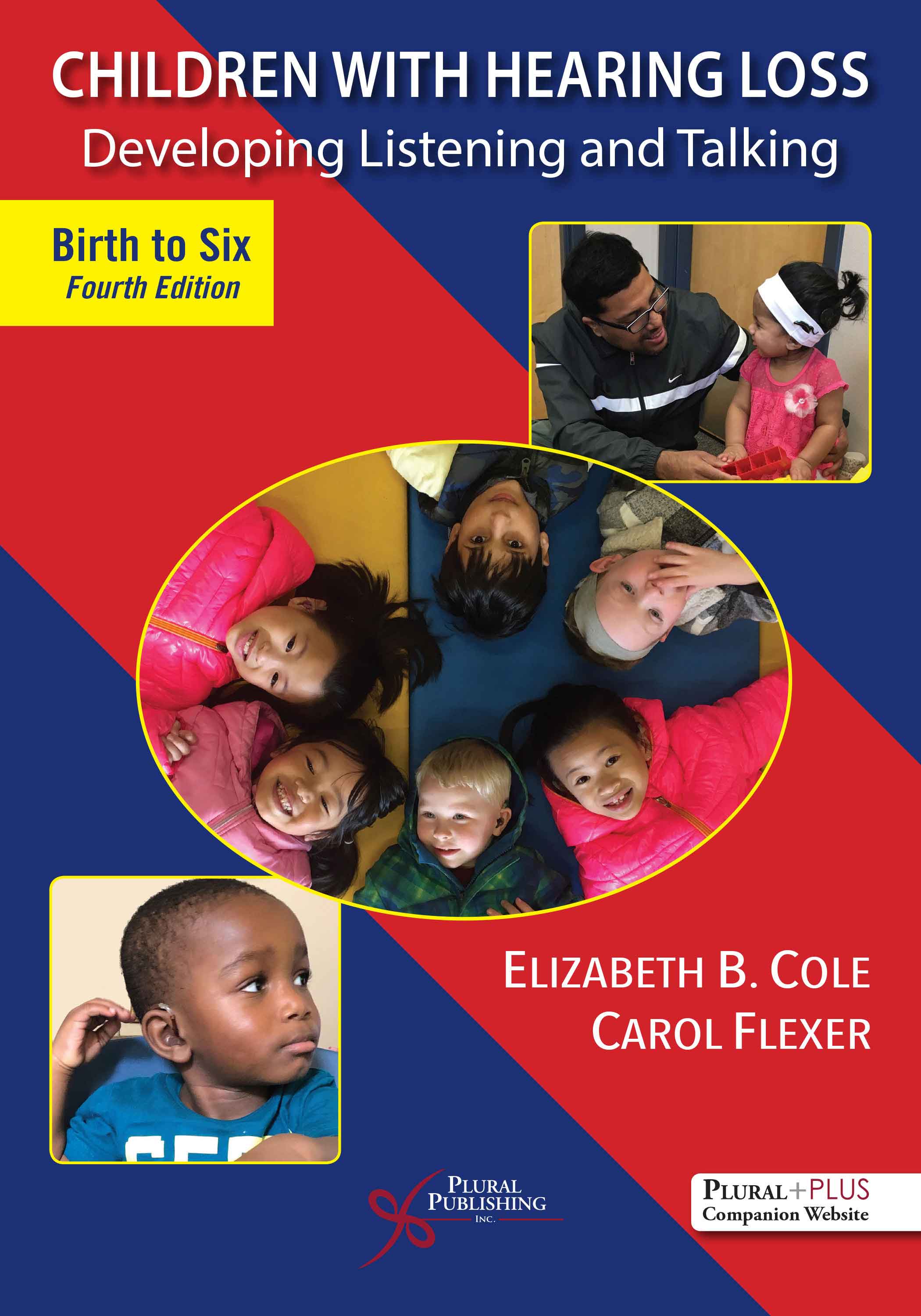
Children with Hearing Loss: Developing Listening and Talking, Birth to Six
Fourth Edition
Elizabeth B. Cole, Carol Flexer
Details: 411 pages, B&W, Softcover, 7" x 10"
ISBN13: 978-1-63550-154-4
© 2020 | Available
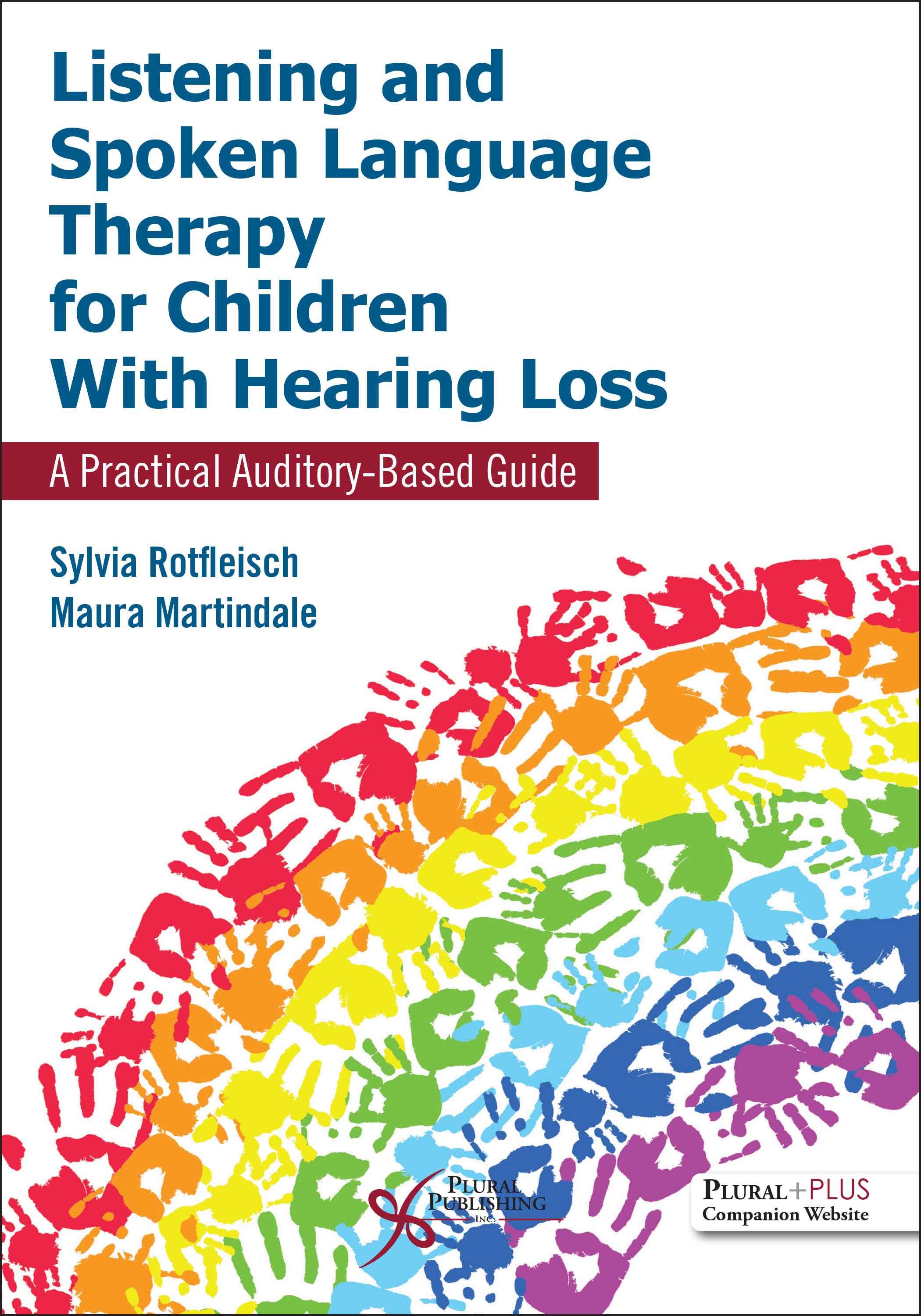
Listening and Spoken Language Therapy for Children With Hearing Loss: A Practical Auditory-Based Guide
First Edition
Sylvia Rotfleisch, Maura Martindale
Details: 310 pages, Full Color, Softcover, 7" x 10"
ISBN13: 978-1-63550-387-6
© 2023 | Available
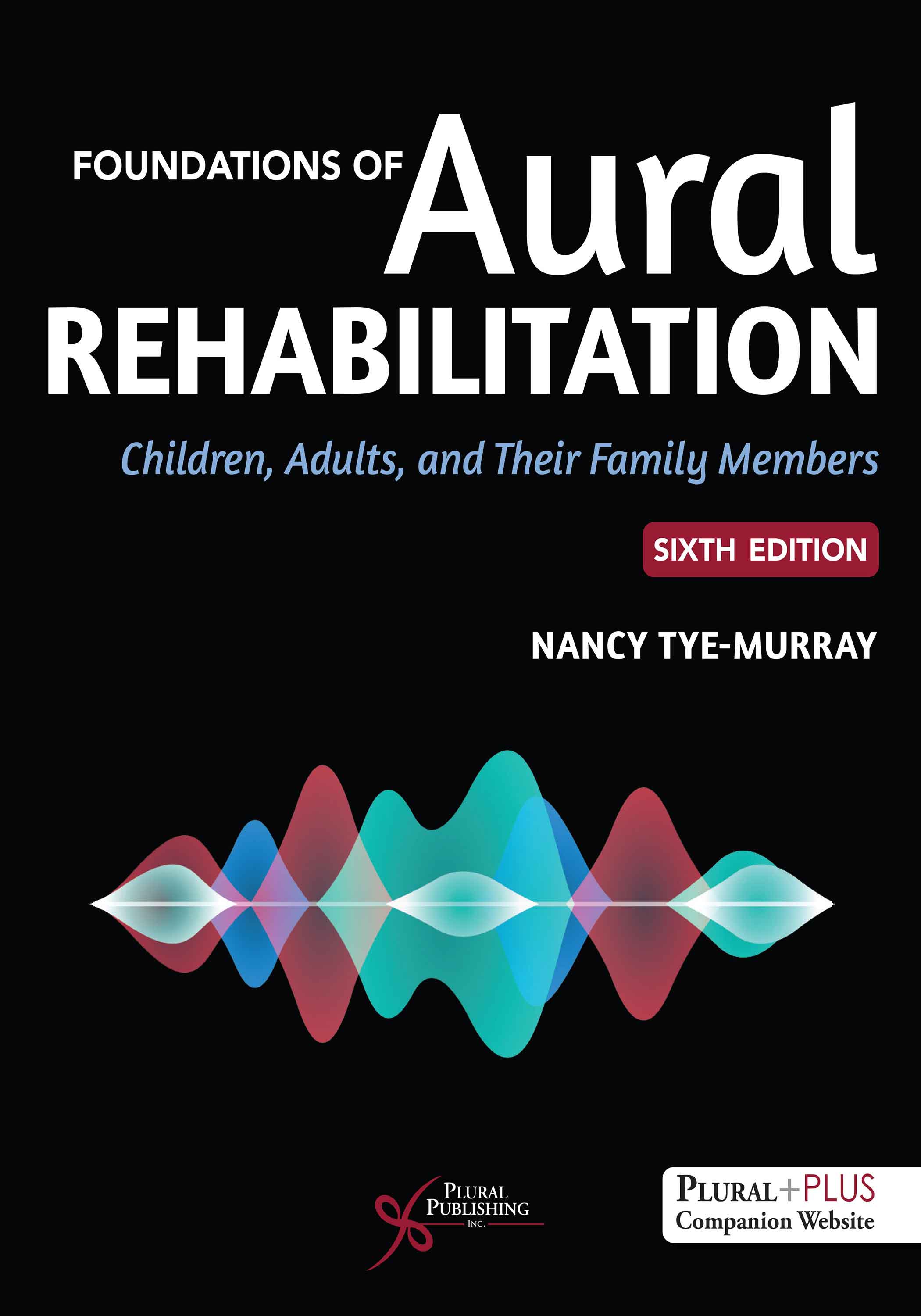
Foundations of Aural Rehabilitation: Children, Adults, and Their Family Members
Sixth Edition
Nancy Tye-Murray
Details: 567 pages, 2-Color, Softcover, 8.5" x 11"
ISBN13: 978-1-63550-420-0
© 2024 | Available

